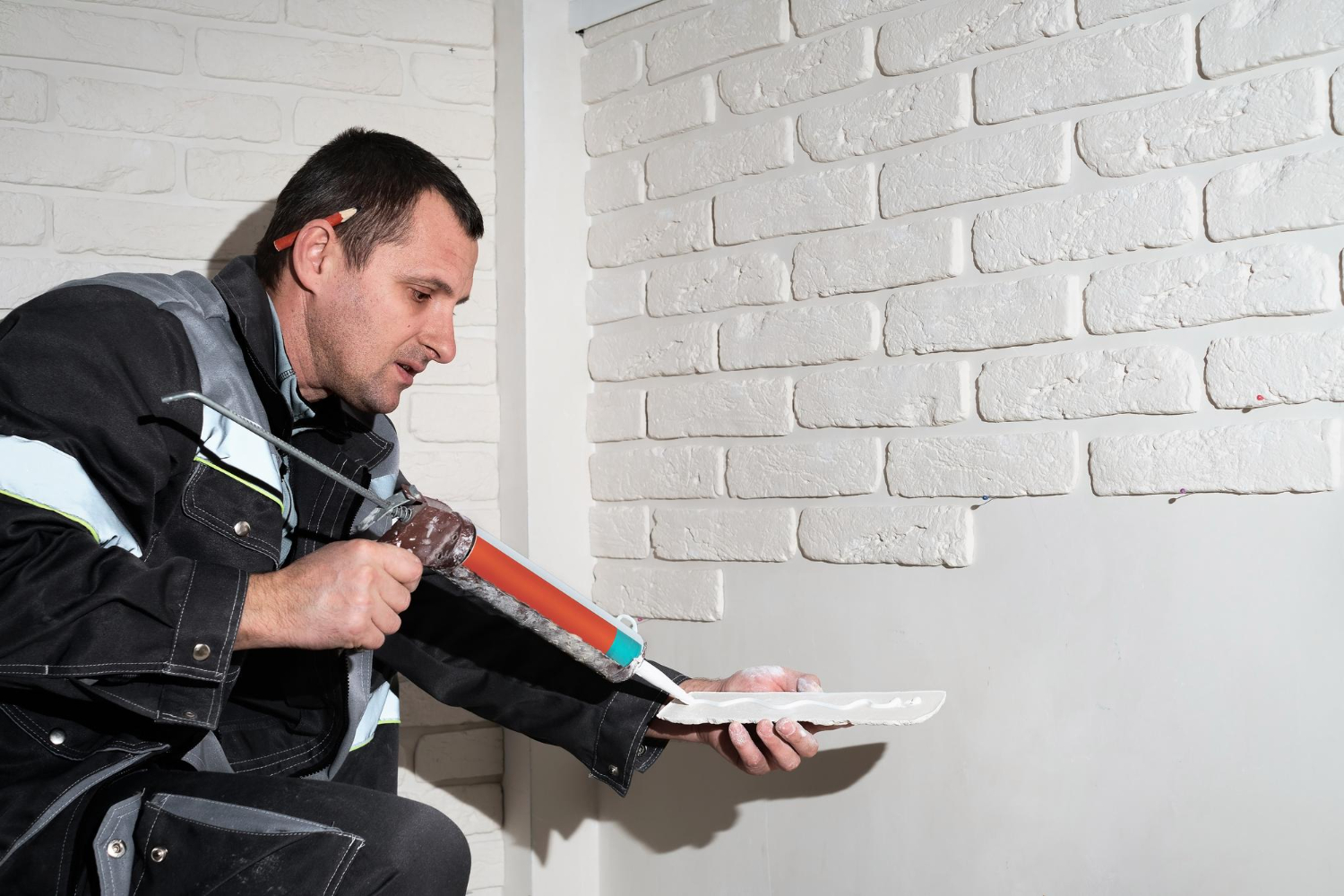Damp proofing is an essential process for any building, ensuring protection against moisture that can damage structures and affect health. It involves applying special materials to walls and floors, preventing moisture from entering interior spaces. This process is crucial for preventing dampness that can lead to mold growth, wood rot, and other costly repairs in the future.
Different methods and materials are available for effective damp proofing, such as damp proof courses, coatings, and membranes. Understanding these options helps in selecting the best approach for specific building needs. With the right damp proofing measures, homeowners can maintain their property’s value and safety.
Regular maintenance and addressing any signs of damp issues early are vital for long-term effectiveness. This proactive approach not only protects the building but also promotes a healthy living environment.
Key Takeaways
- Damp proofing protects buildings from moisture damage.
- Various materials and methods can be used for effective damp proofing.
- Regular maintenance can prevent future damp issues and costly repairs.
Understanding Damp Proofing
Damp proofing is an essential practice in construction that helps protect buildings from moisture. It employs various methods to prevent dampness, which can lead to significant structural issues over time. Key aspects include the definition of damp proofing, the types of dampness a building may face, and the principles behind effective damp proofing techniques.
Definition and Importance
Damp proofing refers to methods used to prevent moisture from penetrating walls and foundations. It aims to keep buildings dry by stopping soil moisture and humidity from causing damage.
This practice is crucial because moisture can lead to mold, rot, and weakness in structures. Protecting buildings from dampness not only preserves their integrity but also enhances indoor air quality.
Damp proofing is often seen in both residential and commercial properties, making it a key consideration in construction and maintenance.
Types of Dampness
There are several types of dampness that can affect buildings, each requiring different approaches for prevention.
- Rising Damp: This occurs when groundwater moves up through porous materials in the walls.
- Penetrating Damp: This type happens when water enters through surfaces, usually due to leaks or heavy rainfall.
- Condensation: This occurs when warm air meets cold surfaces, leading to moisture build-up.
Identifying the type of dampness is critical to choosing the right damp proofing method. Each type can have severe consequences for a structure if not properly addressed.
Principles of Damp Proofing
Damp proofing relies on several core principles to be effective. First, it uses barriers to block moisture from entering structures. These barriers can be physical, like membranes, or chemical, such as waterproof coatings.
Second, proper drainage is vital. Ensuring that water is directed away from the foundation helps minimize moisture exposure.
Third, regular maintenance is necessary to check for any potential leaks or failures in the damp proofing system. By adhering to these principles, buildings can achieve long-lasting protection against moisture damage.
Damp Proofing Materials
Damp proofing materials play a vital role in preventing moisture from damaging buildings. Different types of materials are available, each with unique properties and uses. The following subsections outline key options for damp proofing.
Bituminous Coatings
Bituminous coatings are widely used for damp proofing due to their effectiveness and versatility. These coatings consist of a mix of asphalt and other additives that create a thick, waterproof layer when applied to surfaces.
Key Features:
- Application: Bituminous coatings can be sprayed or rolled on walls and foundations.
- Durability: They provide long-lasting protection against water and moisture.
- Temperature Resistance: They withstand various temperatures without losing effectiveness.
Bituminous coatings are ideal for exterior applications, especially in basements and below-grade structures. Regular maintenance is crucial to ensure their continued performance.
Cementitious Coatings
Cementitious coatings are another reliable option for damp proofing. These coatings are made from a blend of cement, sand, and additives designed to create a hardened, waterproof surface.
Advantages:
- Ease of Application: They can be applied with a brush, roller, or trowel.
- Compatibility: Cementitious coatings bond well with concrete and masonry surfaces.
- Resistance: They resist water intrusion effectively without being affected by weather changes.
These coatings are commonly used in areas exposed to high moisture, such as basements and swimming pools. Proper surface preparation is necessary for the best results.
Plastic Sheets and Membranes
Plastic sheets and membranes are also popular choices for damp proofing. These materials are typically made from polyethylene or similar polymers, providing a barrier against moisture.
Characteristics:
- Flexibility: They can be installed in various applications, including walls and floors.
- Lightweight: Easy to handle and transport, making installation straightforward.
- Watertight Seal: When installed correctly, they create an effective waterproof barrier.
Plastic sheets are often used in combination with other materials for added protection. It’s important to ensure proper sealing to prevent water from passing through joints and seams.
Methods of Damp Proofing
Damp proofing is essential for protecting buildings from moisture damage. Various methods help ensure structures remain dry and safe from dampness. Here are some effective techniques:
Surface Treatment
Surface treatment involves applying a water-resistant coating to walls and floors. This method helps create a barrier that repels moisture.
Common materials used include liquid membranes, sealants, and coatings. These substances can be applied directly to the surface.
Advantages:
- Quick application process
- Cost-effective solution
Considerations:
- May require periodic reapplication
- Effectiveness can vary based on surface condition
Regular maintenance is important to preserve its effectiveness.
Integral Treatment
Integral treatment refers to mixing damp-proofing agents directly into construction materials like concrete or plaster. This method creates a moisture-resistant barrier throughout the material itself.
Key Features:
- Improves durability of the structure
- Reduces the chances of rising damp significantly
This treatment is particularly beneficial for new constructions, as it provides lasting protection.
Examples of additives include:
- Water-repelling agents
- Crystalline waterproofing compounds
Proper application ensures maximum effectiveness.
Cavity Wall Construction
Cavity wall construction is a building technique that uses two walls separated by an air space. This design helps prevent moisture from penetrating the inner wall.
The outer wall protects against rain and damp, while the cavity allows any moisture that reaches it to drain away.
Benefits include:
- Increased thermal performance
- Improved sound insulation
To maintain effectiveness, builders must ensure the cavity is clear and properly ventilated.
This method is often used in residential and commercial buildings.
Pressure Grouting
Pressure grouting involves injecting a water-resistant material into existing cracks or voids in walls or foundations. This technique seals gaps and prevents moisture ingress.
Process:
- Identify areas of concern.
- Drill holes into the affected areas.
- Inject grout under pressure to fill voids.
Advantages:
- Effective for older structures
- Quick application
This method is particularly useful in repairing and maintaining buildings that have developed damp issues over time. Proper assessment and monitoring are essential for long-term success.
Installation Techniques
Proper installation is crucial for effective damp proofing. This involves careful preparation and adherence to correct application procedures to ensure long-lasting protection against moisture.
Preparation and Planning
Before beginning damp proofing, it is vital to plan the project thoroughly. First, assess the site to identify areas prone to moisture. This includes checking for cracks in walls, drainage issues, and nearby trees that could affect moisture levels.
Next, gather necessary materials. Common options include membranes, chemicals, or a damp proof course (DPC). Ensure all surfaces to be treated are clean and free of debris.
Finally, create a detailed timeline for the project, allowing adequate time for each phase. Consider weather conditions, as damp proofing should ideally occur in dry weather for the best results.
Application Procedures
The application of damp proofing varies based on the chosen method. For a DPC, the installation begins by laying a level mortar bed. This bed must be smooth and free from any protrusions to prevent damage.
For waterproofing membranes, cutting the sheets to size is necessary. These sheets should overlap at the seams, ensuring moisture does not penetrate. Use an adhesive or mechanical fixing to secure them in place.
If applying water repellent chemicals, follow the manufacturer’s instructions for dilution and application. Typically, these are sprayed or brushed onto the surfaces, ensuring even coverage.
Effective installation will significantly reduce future moisture issues and enhance the durability of the building.
Maintenance and Problem-Solving
Regular maintenance is essential for keeping damp proofing effective. Regular checks help identify issues early. Understanding how to address damp proofing failures can save time and money.
Regular Checks and Updates
Conducting regular inspections is crucial for effective damp proofing. Homeowners should check for signs of moisture, mold, or peeling paint every few months.
Key Areas to Inspect:
- Basements: Look for water pooling or damp spots.
- Windows and Doors: Check for condensation or mold.
- Exterior Walls: Look for cracking or crumbling.
Updating damp proofing measures as needed is equally important. If cracks or leaks are found, homeowners should repair them promptly. Using modern materials can enhance protection. Regular maintenance can make a significant difference in keeping a home dry.
Dealing with Damp Proofing Failures
In case damp proofing fails, it is essential to act quickly. Homeowners should identify the type of damp issue—rising damp, penetrating damp, or condensation.
Steps to Address Failures:
- Identify the Source: Check for leaks or poor drainage.
- Evaluate the Damp Proof Course: Assess its condition and effectiveness.
- Implement Repairs: Use appropriate treatments like waterproof membranes or sealants.
If problems persist, it may be necessary to consult a professional. They can provide tailored solutions based on the specific situation. Taking these steps can help restore the home’s defenses against dampness.














